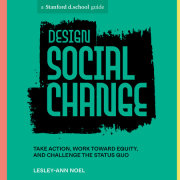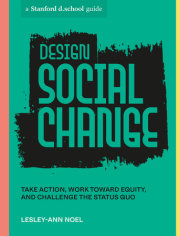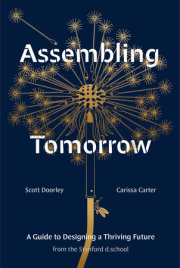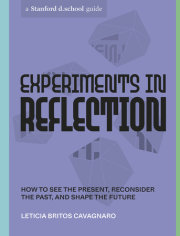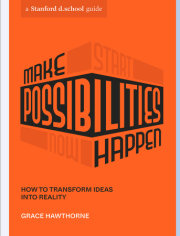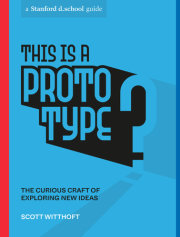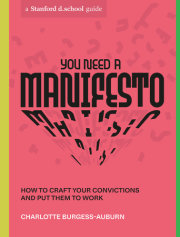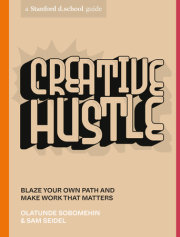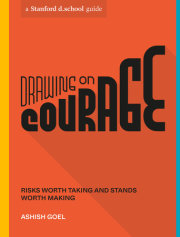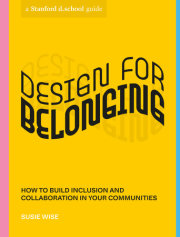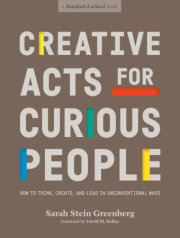IntroductionIf you find yourself thinking of cooking and food as you read this book, it is not accidental. This book began as a cookbook. Yes, you read that correctly. The seed for this book was a food analogy I’ve been using in the design classes that I’ve been teaching for several years: I ask my students, “Can we cook up change?” What if making a change that mattered was as easy as mastering ingredients and combining them the right way? What if we could just open our pantry, mix up some ingredients, and make some change? What ingredients and techniques do we need to learn to stir up change? Samin Nosrat’s cookbook,
Salt, Fat, Acid, Heat opens with the sentence, “Anyone can cook and make it delicious.” I’ve been a product designer and design educator for more than twenty years, and that’s how I feel about design and social change. Everyone can do this and make it good.
Of course, the ingredients for change are a bit different from those for my favorite Tobagonian dish, curried crab and dumplings. However, I find the process of designing the change you want to see in the world can be similar to following a recipe. It requires an understanding of ingredients—in this case those ingredients are things like anger about unfair treatment for you or others, joy about personal successes, and empathy for people who are oppressed. It requires a vision of the finished dish; a knowledge of the steps and methods; and, maybe most importantly, the courage and agency to change the process to suit your own style, what you have on hand, and each individual project. Your design recipes will turn out even more tasty if you add some special ingredients of your own.
This book is a place to start. It’s about challenging the status quo. It is about learning to see what is not enough for you, especially if you’re from an underrepresented group. It is about learning to see what is not enough for other groups in society around you. It’s about identifying needs, making demands, and making change. And to do that, we’ll use social justice concepts like building critical awareness, equity concepts like recognizing oppression, and design concepts like prototyping. This book is designbased, and design is action-based, so I hope you will create change through action. Throughout this book, you will be introduced to new concepts, theories, and methods that you can learn to combine to make the change you need.
The change that I am talking about is social change—the kind of change that led to the abolition of slavery in the Americas, the civil rights movement in the United States, the end of apartheid in South Africa, women’s rights around the world, workers’ rights, new labor laws in the twentieth century, and more. This book is about making the kind of change that will have a lasting impact on social practices. It’s about the type of change that moves people beyond surviving to thriving. To achieve this, you need to know who you are and what motivates you as a changemaker, you need an awareness of the forces preventing you (and others) from thriving, and you need to make a conscious effort to “design out” these forces on individual and collective levels. In this book, the “Your Turn” activities will help you get to work with the concepts, and the “Take Note” sections will more deeply inform you on each topic. Throughout, you will find references to food, design, and personal stories that I and other people have shared. You will also find art by Che Lovelace, an artist from Trinidad and my friend for many years. His art depicts scenes and people from Port of Spain in Trinidad, where I grew up; I hope these will help you reflect on the impact of social change.
The art in section 1 features a person looking reflectively off the canvas, setting the tone for reflecting on yourself and the world around you. The art in section 2 features two women looking at each other in a market, preparing you for collaborating with others in the real world. Finally, the art in section 3, depicts people and scenes from Port of Spain, and is representative of many places around the world that are ripe for social transformation. The city is rich with music and culture but is also affected by poverty and crime. In section 3, you are invited to consider how we create dreamspaces to carry places like the economically depressed urban communities of Port of Spain—like Belmont, where I lived for a decade—into the future.
Design is a powerful changemaker. Part of this power comes from the tools and process of design being able to adapt to fit your context, your style, and your community. You don’t have to be a designer, and you don’t have to accept tradition to use design for change. This book will show you how to get comfortable trying things out, exploring different methods, and using various approaches to design for equitable change. If it isn’t perfect, it’s okay; you can adapt and try again. What’s important is taking that creative risk. Let’s get to work stirring up change to create more equitable futures.
Copyright © 2023 by Lesley-Ann Noel and Stanford d.school. All rights reserved. No part of this excerpt may be reproduced or reprinted without permission in writing from the publisher.



